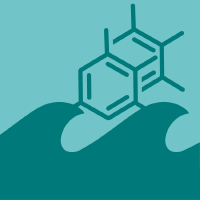Topic Menu
► Topic MenuTopic Editors



Antitumor Activity of Natural Products and Related Compounds

A printed edition is available here.
Topic Information
Dear Colleagues,
Cancer is one of the leading causes of morbidity and mortality in humans today, and the number of people affected by cancer is growing. As a result, the search for new antitumor agents that may be more effective and secure than existing treatments is an ongoing effort.
Nature provides a wide range of compounds with a great variety of chemical scaffolds and distinct bioactivity profiles. Indeed, natural products are a rich source of bioactive molecules that, over the years, have found application in the treatment of many diseases, including cancer. Natural products have played an important role in chemotherapy and chemoprevention by providing antitumor drugs such as camptothecin, doxorubicin, paclitaxel, vinblastine, and vincristine, as well as understanding the cellular and molecular mechanisms underlying antitumor activity. Significant advances in natural source isolation and extraction techniques have enabled the identification of novel lead compounds as useful starting points for the generation of optimized molecules with enhanced therapeutic potential via semi-synthetic or synthetic processes.
The focus of this Topic is on natural substances derived from plants or animals, as well as their synthetic derivatives, which have been investigated for their ability to counteract cancer progression.
Dr. Barbara De Filippis
Dr. Alessandra Ammazzalorso
Dr. Marialuigia Fantacuzzi
Topic Editors
Keywords
- anticancer
- antiproliferation
- natural compounds
- natural derivatives
- drug discovery
- bioactive natural products
- synthetic compounds
- medicinal chemistry
- computational chemistry
- biological activity
- structure–activity relationship
- structure-based drug design
- target identification and validation
Participating Journals
| Journal Name | Impact Factor | CiteScore | Launched Year | First Decision (median) | APC |
|---|---|---|---|---|---|

Biomolecules
|
4.8 | 9.4 | 2011 | 16.3 Days | CHF 2700 |

International Journal of Molecular Sciences
|
4.9 | 8.1 | 2000 | 18.1 Days | CHF 2900 |

Molecules
|
4.2 | 7.4 | 1996 | 15.1 Days | CHF 2700 |

Scientia Pharmaceutica
|
2.3 | 4.6 | 1930 | 31.4 Days | CHF 1000 |

Cancers
|
4.5 | 8.0 | 2009 | 16.3 Days | CHF 2900 |

Marine Drugs
|
4.9 | 9.6 | 2003 | 12.9 Days | CHF 2900 |

MDPI Topics is cooperating with Preprints.org and has built a direct connection between MDPI journals and Preprints.org. Authors are encouraged to enjoy the benefits by posting a preprint at Preprints.org prior to publication:
- Immediately share your ideas ahead of publication and establish your research priority;
- Protect your idea from being stolen with this time-stamped preprint article;
- Enhance the exposure and impact of your research;
- Receive feedback from your peers in advance;
- Have it indexed in Web of Science (Preprint Citation Index), Google Scholar, Crossref, SHARE, PrePubMed, Scilit and Europe PMC.

